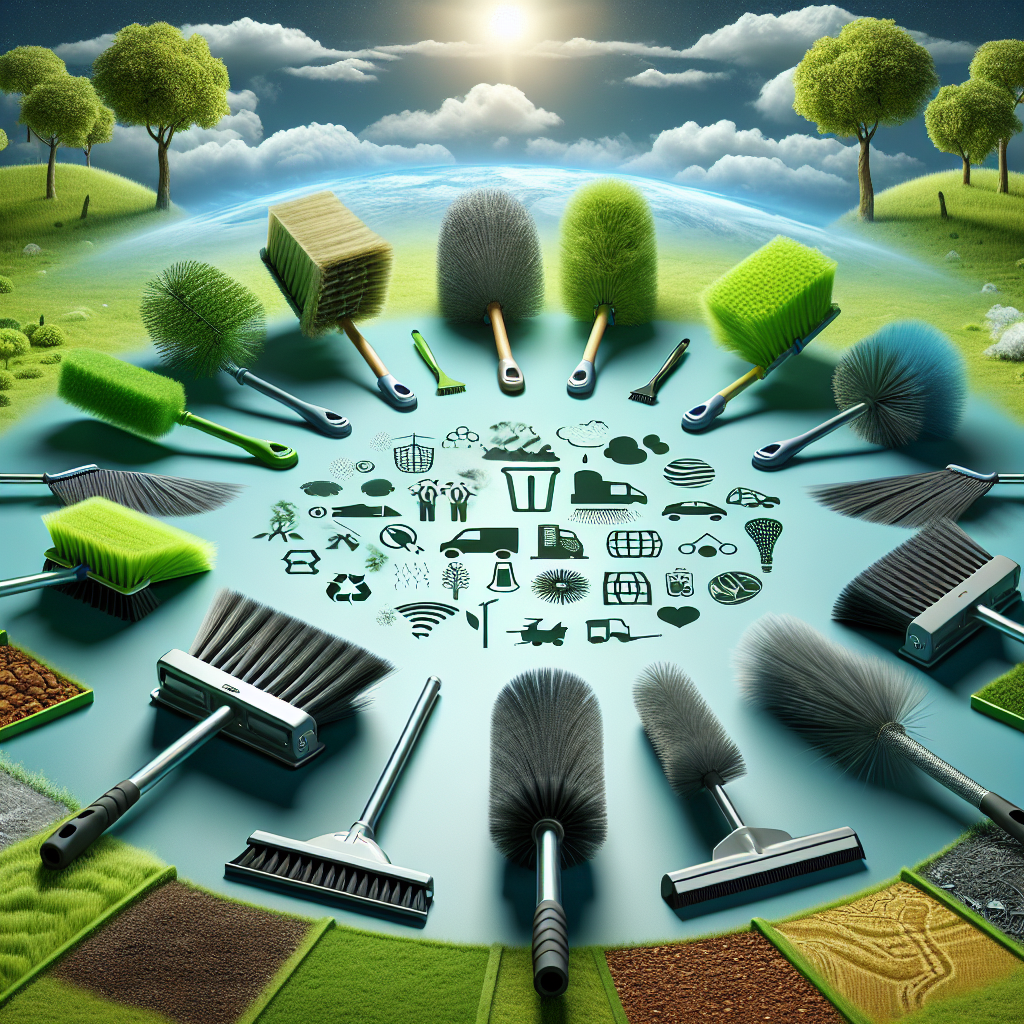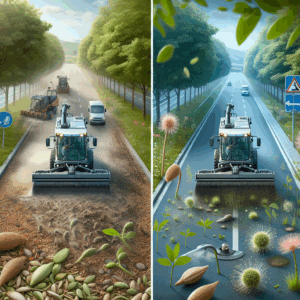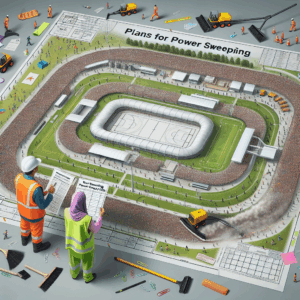Power sweeping brushes are tools used to clean streets, parking lots, and big outside areas. While they help keep our environment clean, they can also affect it in other ways. In this article, we will explore the environmental impact of these brushes and the materials they are made from.
Power sweeping brushes are attached to big machines that sweep away dirt, leaves, and trash. This helps prevent debris from entering storm drains and waterways where it can harm wildlife and plants. Clean streets look nice and are safer for people, too. However, the production, use, and disposal of power sweeping brushes and their materials can pose environmental challenges.
Materials Used in Power Sweeping Brushes
Most power sweeping brushes are made from plastic bristles, metal, or a combination of both. The plastic is durable and does a good job of picking up debris, but it also raises concerns. Plastic is made from petroleum, a non-renewable resource that is extracted from the earth. This process can cause air and water pollution. Additionally, when plastic brushes wear out, they often end up in landfills, where they can take hundreds of years to decompose.
On the other hand, brushes made with recycled materials or natural fibers, like coconut or bamboo, are more eco-friendly. Using recycled materials reduces the demand for new plastic, helping to conserve resources and reduce pollution. Natural fibers are biodegradable, meaning they can break down naturally and don’t pollute the environment.
Environmental Effects of Brush Production and Disposal
Making and disposing of power sweeping brushes can have several environmental impacts:
-
Energy Consumption: Producing power sweeping brushes requires energy. Factories that produce these brushes often use non-renewable energy sources, such as coal or natural gas, which emit greenhouse gases. These gases contribute to global warming and climate change.
-
Waste Generation: When power sweeping brushes are worn out, they are usually thrown away. Plastic waste contributes to the growing problem of waste in landfills and can also end up in oceans, where it harms marine life.
-
Pollution: Both the production and disposal of brushes can release harmful pollutants into the air and water. Factories may release pollutants during the manufacturing process, and as plastic wastes break down in landfills, they might leak harmful substances.
Ways to Reduce Environmental Impact
There are several steps that manufacturers and users of power sweeping brushes can take to lessen their environmental impact:
-
Use More Sustainable Materials: Choosing brushes made from recycled or biodegradable materials can help reduce waste and pollution. Manufacturers should focus on developing and promoting these eco-friendly products.
-
Reduce and Reuse: It's important to repair and reuse parts of power sweeping machines whenever possible. Some brushes can be refurbished by replacing only the worn-out bristles, rather than throwing the whole brush away.
-
Recycle: Encouraging the recycling of power sweeping brushes and parts can help cut down on landfill waste. Many metals found in the brushes can be recycled and used to make new products.
In conclusion, while power sweeping brushes play an important role in keeping our communities clean, their materials and production processes can have negative environmental impacts. By choosing more sustainable materials and embracing recycling and reuse, we can help minimize these effects and protect our planet for future generations. It's up to all of us to consider the environmental impact of the tools we use and make choices that benefit both humans and nature.









